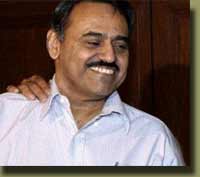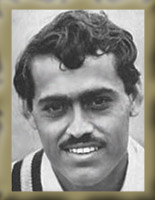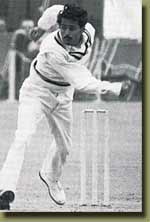Bhagwat Subramanya Chandrasekhar Early lifeIntuitive and skilled in the city of Mysore, Chandrasekhar was obsessed with cricket from a very early period. Overcoming a polio assault which emaciated his right wrist as a child, so that he constantly used his left arm for throwing, he became one of the most victorious leg spin bowlers in cricket olden times. Healing and restoration meant his payments three months in hospital, but once he came home his parents encouraged him to live the regular life of a five-year-old. He has never elapsed how much he be in debt to all in the order of him for the guts and assurance they gave him at that imperative period of his childhood. An anarchic bowler with an abnormally long run-up, Chandrasekhar played in 58 Test matches, and collected 242 wickets in his profession. He frequently bowled at medium speed; replacing his leg break, for he was not a huge turner of the ball, for his googly or flipper to much achievement. He well thought-out Englishman Ken Barrington as the hardest batsman to bowl to.One can narrate many occasions of victor sportsmen and sportswomen who were invalids in childhood. In reality, it was once frightened that Doris Hart, the Wimbledon women's champion in 1951, would never hike again because of an infectivity in the knees. But Chandrasekhar must be distinctive in that he has turned his distortion, a shrunken arm, into an instrument of victory. The trust is that the narrowness of his arm gives it the litheness of whipcord, permitting him to produce the extra crunch into in his top-spinner. Indeed, Chandrasekhar is not a wrist-spinner in the standard mould. He is, in fact, medium-paced. Top-spinners and googlies are his stock-in-trade, even though it is not that he not at all delivers a leg-break. In actuality quite a lot of Indian batsmen have said that he now spins his leg-break more piercingly than ever before. He is talented to generate an adequate amount speed to have once bowled a copious in a Test match. The absurdity of that occurrence was that the target of the cushion was Charlie Griffith. The drive got home, even though not as agonizingly as it would have prepared if the roles had been inverted. This, by the way, ensued in the final innings of the 1966-67 sequence, at Madras. Chandrasekhar did not turn up in big cricket through the expected straits of the Inter-State Schools' championship and the Inter-University contest. When only a moment ago past his seventeenth birthday, he went directly from club and schools cricket to the Mysore area. Three months amend, he was a Test player. With 25 wickets in four Ranji Trophy fixtures, Chandrasekhar was selected for the Board President's XI (a squad of Test contenders) to face the 1964 M.C.C. squad in their opening contest. Though he took only one wicket, that of Sharpe, he made inkling, not least in the course of inducing an unaccepted glide opportunity from Ken Barrington. Test Cricket RecordChandrasekhar began his career in Test Cricket in a game played in opposition to England at Bombay (now Mumbai) in the year 1964, even though he gave his best show in a match in opposition to England played at The Oval Cricket Ground on the 23rd of August 1971. He coped to take 6 wickets for 38 runs in this match, which in due course got India the coveted triumph in the succession. Making his Test entrance in opposition to England at Bombay in 1964, his most tremendous performance was in opposition to England at The Oval on August 23, 1971 where he took six wickets for 38 runs, and helped India to a sequence win. He frequently said that he was never capable to tell what was going to ensue when he bowled and he was more likely to bowl a pedestrian ball than a good ball. Of the spin quartet, he was the most probable to bowl an unplayable delivery, and it brought India many glory together with its first triumph in Australia. Achievements & RecognitionsHe was awarded as a Wisden Cricketer of the Year in 1972 and won the Wisden's "Best bowling performance of the century" honor in 2002, for his 6 wickets for 38 runs in opposition to England at the Oval in 1971.Chandrasekhar had minimum batting skills, finishing with a Test standard of 4.07. He was given an extraordinary Gray-Nicholls bat for the period of 1977-78 Australian tour with a fissure in it to memorialize the four ducks he gained. He has 23 ducks to his tribute. He also holds the in doubt record of scoring smaller amount of runs (167) off his bat than wickets (242) taken in Test cricket. The only other cricketer to have accomplished this 'record' over a momentous Test career is Chris Martin. Endorsed to him is a well-known umpire-directed reference, made for the period of a day of horrific decisions in New Zealand after quite a few of his LBW appeals were specified not-out: "I know he is bowled, but is he out?" Batting Nightmare The Fighter Bounces BackBut he soon appeared as a winner once more after the World Cup outlandish, and scored 91 runs not in opposition to Bangladesh in a sequence later and 174 runs in 3 matches all through the Afro-Asia Cup with an standard of 87.00 runs.Batting style Right-hand bat Bowling style Leg break
|

Common Games Of India || History Of Games& Sport || Pre School Games || School Games || Games For Girls & Women || Team Games

